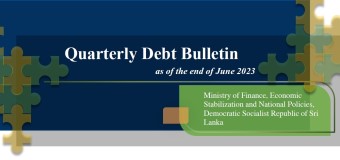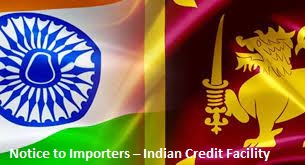Development Partners
Bilateral Development Partners and Agencies
| Bilateral Development Partners and Agencies | Country of Residence |
| Abu Dhabi Fund for Arab Economic Development | United Arab Emirates |
| Canadian International Development Agency | Canada |
| China Development Bank Corporation | People's Republic of China |
| Government of Australia | Australia |
| Government of Belgium | Belgium |
| Government of Canada | Canada |
| Government of Denmark | Denmark |
| Government of Finland | Finland |
| Government of France | France |
| Government of Hungary | Hungary |
| Government of India | India |
| Government of Iran | Iran |
| Government of Italy | Italy |
| Government of Japan | Japan |
| Government of Kuwait | Kuwait |
| Government of Netherlands | Netherlands |
| Government of New Zealand | New Zealand |
| Government of Norway | Norway |
| Government of Sweden | Sweden |
| Government of Switzerland | Switzerland |
| Government of the Republic of Korea | South Korea |
| Government of the Swiss Confederation | Switzerland |
| Government of the United Kingdom | United Kingdom |
| Government of Venezuela | Venezuela |
| Government of Pakistan | Pakistan |
| Government of The United Arab Emmirates | United Arab Emmirates |
| Government of the Federal Republic of Germany | Germany |
| Government of The People's Republic of China | People's Republic of China |
| Government of the United States of America | United States of America |
| International Development & Research Centre | Canada |
| Iraqi Fund for External Development | Iraq |
| Kingdom of Spain | Spain |
| Saudi Fund for Arab Economic Development | Saudi Arabia |
| People's Libyan Arab Jamahiriya | Libya |
| Swedish Agency for Research Cooperation | Sweden |
| Banker's Trust Company U.S.A. | United States of America |
| Banque Francaise du Commerce Ext. COM | France |
| Banque Indo_Suez and BFCE | France |
| Bear Steans & Company Inc. | United States of America |
| Citibank International PLC UK | United Kingdom |
| Citibank, N.A. | Japan |
| Consortium of Swiss Banks | Switzerland |
| HSBC | Hong Kong |
| Lloyds Bank Plc | United Kingdom |
| Lloyds Merchant Bank Limited | United Kingdom |
| Manufacturers Hanover Trust Company | United States of America |
| MeesPierson N.V. | Netherlands |
| National Bank For Cooperatives (USA) | United States of America |
| Skandinaviska Enskilda Banker | Sweden |
| Solomon Brothers Incorporated Co. | United States of America |
| Standard Chartered Bank (UK) | United Kingdom |
| The Riggs National Bank of Washington DC | United States of America |
| A/S EKSPORTFINANS | Norway |
| AB Svensk Export Credit | Sweden |
| ABN - AMRO Bank | Netherlands |
| ABN-AMRO Stockholm Bank | Sweden |
| Agence Francaise De Developement | France |
| Australian & New Zealand Investment Bank | Australia |
| Banco Bilbao Vizcaya Argentaria S.A. | Spain |
| Bank Austria Creditanstalt AG | Austria |
| Banque Francaise Du Com.Ext.&other Banks | France |
| Banque Indosuez Stockholm Branch | Sweden |
| BNP Paribas | Belgium |
| Calyon Credit Agricole CIB | France |
| Citibank International Limited Hong Kong | Hong Kong |
| Co-op Centrale Raiffeisen-Boerenleenbank | Netherlands |
| Credit Agricole Indosuez | France |
| Credit Agricole Indosuez Stockholm Branc | Sweden |
| Danske Bank A/S | Denmark |
| Deutsche Bank AG | United Kingdom |
| Export Development Bank of Iran | Iran |
| Export Finance & Insurance Corporation | Australia |
| Export Import Bank of United States | United States of America |
| Export Import Bank of Hungary | Hungary |
| Export Import Bank of India | India |
| Export- Import Bank of Malaysia | Malaysia |
| Finnish Export Credit Ltd. | Finland |
| Fortis Bank NV/Fortis Banque SA | Belgium |
| Government of the Russian Federation | Rassia |
| HSBC Bank PLC (UK) | United Kingdom |
| HSBC Limited (Hongkong) | Hong Kong |
| ING Bank N. V. | Netherlands |
| Japan Bank For International Cooperation | Japan |
| KBC Bank of Belgium | Belgium |
| M/S Mechanoexportimport Rumania | Romania |
| Natexis Banques Populaires | France |
| Nordea Bank Finland PLC | Finland |
| Nordea Bank Sweden | Sweden |
| Overseas Private Investment Corporation | United States of America |
| RAIFFEISEN ZENTRAL BANK | Austria |
| Societe Generale | France |
| Svenska Handelsbanken AB(publ) | Sweden |
| The Export-Import Bank of China | People's Republic of China |
| UniCredit Bank Austria AG | Austria |
Multilateral Development Partners and Agencies
| Multilateral Development Partners and Agencies | |
| Asian Development Bank | |
| Commission of the European Communities | |
| European Community | |
| European Investment Bank | |
| OPEC Fund for International Development | |
| Nordic Development Fund | |
| Food & Agriculture Organization | UN Agencies |
| International Bank for Reconstruction & Development | |
| International Fund for Agricultural Development | |
| International Development Association | |
| United Nations Development Programme (UNDP) |
|
| United Nations Educational, Scientific and Cultural Organization (UNESCO) |
|
| United Nations Population Fund (UNFPA) | |
| Office of the United Nations High Commissioner for Refugees (UNHCR) |
|
| United Nations Children’s Fund (UNICEF) | |
| United Nations Industrial Development Organization (UNIDO) | |
| World Food Programme | |
| World Health Oranization | |
Debt Indicators Summary
Assessing the Foreign Debt Sustainability
The external financing, provides resources to bridge domestic savings-investment gap as required investment levels for high growth is large. The Government is committed to maintain 6 percent of GDP annually for public investments. At present about 40 percent of the public investment expenditure is financed through external financing.
Despite the external shocks and setbacks emanating time to time such as fuel price fluctuation, increased commodity prices, financial crises in the Asian region and subsequent global recession, the conflict situation in the middle east countries and change of export concessions as well as domestic hurdles including protracted conflict, tsunami devastation and natural disasters such as frequent floods, Sri Lanka wasable to fulfill all its debt service responsibilities on time without any defaults.Maintaining the default free status of the country is a prime goal of the government particularly in the context that the global economy is showing, once again, the signs of instability. Under the deteriorating economic conditions in advanced countries, Sri Lanka will continues to maintain all its debt burden indicators below the threshold levels.
The annual borrowing limits are normally decided based on a medium and long term debt plan which is subsequently approved by the parliament. The existing borrowing strategies are being reviewed and updated regularly by the relevant agencies including the Ministry of Finance and the Central Bank of Sri Lanka. This helps to maintain an appropriate debt position under periodic economic changes and shocks in the domestic and international arena. The entire debt portfolio is analyzed in terms of commitments, disbursements, total debt accumulated and debt servicing in relation to a defined time framework. The Standard Debt Burden Ratios and the derivatives derived from these analyses are used to determine the accepted borrowing limits or thresholds. Based on these indicators which are regularly updated, proactive measures are being taken to minimize the risk of the country’s indebtedness and credit rating. Total Debt Stock, Total Debt Service Ratio, External Debt to GDP Ratio and the Debt to Export Ratio are continually monitored by the government and all these indicators are currently remaining below threshold level due to the prudent economic and monetary policies adopted by the government. Accordingly, Sri Lanka is currently maintaining a sound position with respect to its debt sustainability.
According to the recent assessments carried out jointly by the World Bank and IMF, Sri Lanka has been categorized as a moderate debt distress country. The greater macroeconomic and financial stability, improving revenue position, and stable political situationhave prompted this position. A larger portion of Sri Lanka’s foreign debt stock consists of loans obtained at concessionary terms, including low interest rates and longer repayment periods with fairly long grace periods. As a result, Sri Lanka is in a good position with regard to loan repayments, even though the depreciation of the Rupee over the long run has created a negative impact on loan repayments. Also, the increased GDP and income level as well as increased revenues brought Sri Lanka to a safer position in relation to the servicing of external debt.
As the country has reached a middle income economy status, the availability of concessional external assistance which are generally available to less developed economies is now reaching its limits. In this back ground, initiatives have been taken to broaden the options for alternative financing sources to fill the gap in public investment.
Considering a diverse range of terms and conditions, government has been able to maintain a proper blend of concessional and non-concessional financing with available concessional financing from multilateral and bilateral sources as well as financial markets to keep the cost of borrowing at an affordable level. Development partners and lending agencies are also encouraged to adopt programmes based financing rather than focusing on individual projects in order to improve quality of public spending.
The foreign financing strategy of the Government recognize that the development projects which are implemented using foreign financing would create an asset base and economic activities that will generate future stream of income sources leading to increase of tax revenue and other sources of income in support of debt servicing. Therefore, foreign financing for development projects raised by the Government is appraised not only its financial terms, but also by examining the purpose for which such foreign financing is used and their return overtime to ensure they create a more revenue generating asset base.
Accordingly, the government borrowings from foreign sources are mobilized largely to finance large-scale infrastructure projects concentrating on well focused development needs in each sector creating diverse income earning sources in the economy. A greater focus has been made on the needed large investments for the priority sectors such as energy, roads including highways, ports and aviation, irrigation and water supply schemes to increase returns on investments to match the changing cost structure of foreign debt.
The present borrowing strategy of the government depends on two basic principles; (a) borrowing at the lowest possible cost and (b) ensuring adequate provision for servicing the existing debt. Accordingly, the government has been successful in reducing foreign debt to GDP from 38.8 percent in 2005 to 34.2 percent in 2016 indicating the country’s capability to manage debt service payment.
In general, the proceeds from concessional loans are channelled to the sectors that need somewhat longer periods to produce results- such as education, skills development and health. An appropriate mix of concessional and non-concessional financing is also being used to improve rural water supply and electricity services, development of national, provincial and rural roads to ensure connectivity between remote villages as well as for regional development programmes.
The non-concessional loans and mixed credit facilities have been borrowed for implementation of strategic priority projects that can generate sufficient economic returns to meet the debt service requirement of the particular loans. After assessing the technical, economical and social feasibility, economically viable development projects are selecting carefully by the government to be financed from external borrowings at non concessional and commercial terms. Government has already streamlined the project approval process for this purpose.
Key Debt Indicators - External Debt
| 2010 | 2011 | 2012 | 2013 | 2014 | 2015 | 2016 | 2017 | 2018 | 2019 | 2020 | |
| External Debt to GDP (Percentage) | 31.6 | 32.3 | 31.7 | 30.9 | 30.0 | 32.4 | 33.7 | 35.4 | 41.5 | 42.6 | 40.4 |
| External Debt Service to GDP (Percentage) | 1.70 | 1.75 | 2.69 | 1.87 | 2.74 | 3.53 | 2.46 | 2.92 | 3.67 | 5.48 | 5.15 |
| Debt Servie Ratio (Debt Service/ Exports, Percentage) | 10.7 | 11.1 | 16.4 | 16.0 | 13.7 | 17.4 | 11.6 | 13.4 | 16.0 | 23.3 | 31.9 |
| External Debt to Exports (Percentage) | 197.2 | 178.3 | 179.7 | 166.2 | 141.6 | 145.2 | 159.3 | 162.2 | 181.0 | 178.6 | 250.2 |
Source: Annual Reports, Central Bank of Sri Lanka & Ministry of Finance


























